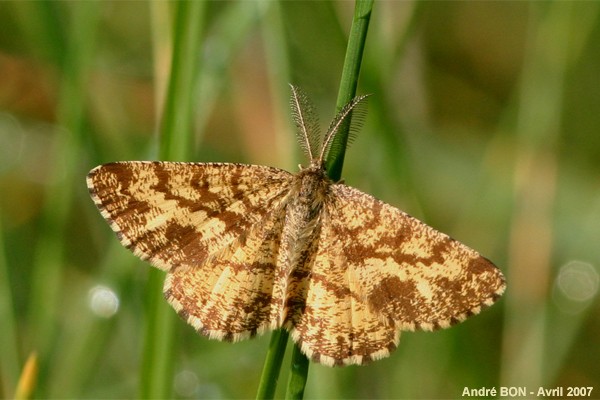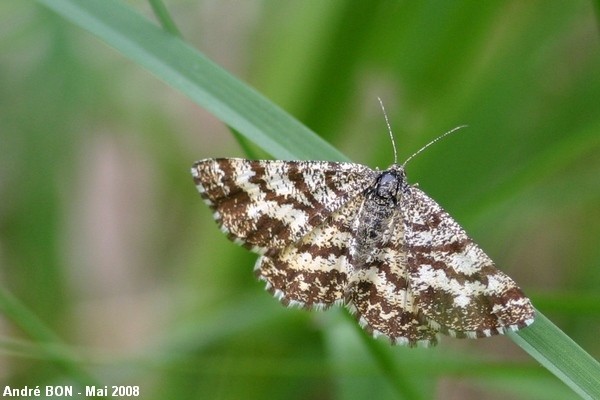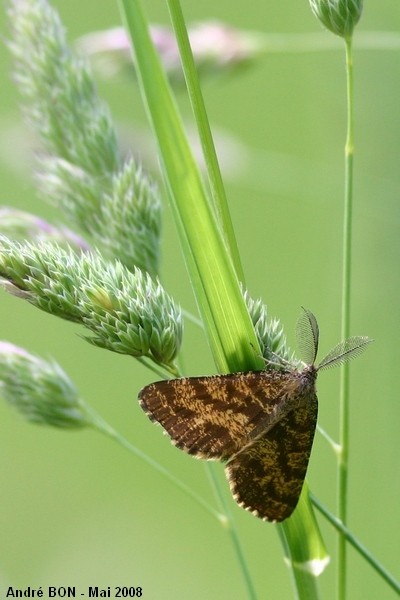


| Common Heath (Ematurga atomaria (Linnaeus, 1758)) |



|
|
Scientific name: Ematurga atomaria (Linnaeus, 1758) Common name: Common Heath French name: Phalène picotée Order: Lepidoptera Suborder: Heterocera Family: Geometridae Subfamily: Ennominae Wingspan: 25-35 mm Biotope: Dry meadows, open woodlands, woodland edges, peat bogs, moorlands, clover fields. Geographic area: All Europe and a great part of Asia. Flight time: May to September. Number of generations : 1 or 2 Caterpillar: Grey or dark green with white dots or lines on the back. Host plant: Heather (Calluna), Heath (Erica) and various leguminous plants. |
The Common Heaths are moths which often fly during the day. Males and females are very different. The female bears threadlike antennae. The wings have brown bands across a white underground. The male bears feathery antennae. The wings have reddish-brown bands across a yellow underground. The outer margin of the wings is alternately pale and dark both for males and females. It over winters as a pupa. |
| [To know more about the Common Heath] [Next picture] [Top] |

|
I observed this Common Heath in a clearing. We can clearly see the two feathery antennae. |
| [To know more about the Common Heath] [Next picture] [Previous picture] [Top] |

|
You can easily recognized females with their threadlike antennae and their whitish wings. |
| [To know more about the Common Heath] [Previous picture] [Top] |

|
There are not yet many butterflies in the high grasses at this early period of the year. The Common Heath, which flies during the day, is a pleasant subject for our photo sessions. |